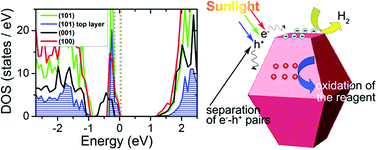Effective increasing of optical absorption and energy conversion efficiency of anatase TiO2nanocrystals by hydrogenation†
Abstract
Disorder-engineered nanophase anatase TiO2 through

* Corresponding authors
a
School of Physics, State Key Laboratory of Crystal Materials, Shandong University, Jinan 250100, People's Republic of China
E-mail:
daiy60@sina.com
b Advanced Materials and Process Engineering Laboratory, the University of British Columbia, Vancouver, BC, Canada
Disorder-engineered nanophase anatase TiO2 through

 Please wait while we load your content...
Something went wrong. Try again?
Please wait while we load your content...
Something went wrong. Try again?
J. Lu, Y. Dai, H. Jin and B. Huang, Phys. Chem. Chem. Phys., 2011, 13, 18063 DOI: 10.1039/C1CP22726B
To request permission to reproduce material from this article, please go to the Copyright Clearance Center request page.
If you are an author contributing to an RSC publication, you do not need to request permission provided correct acknowledgement is given.
If you are the author of this article, you do not need to request permission to reproduce figures and diagrams provided correct acknowledgement is given. If you want to reproduce the whole article in a third-party publication (excluding your thesis/dissertation for which permission is not required) please go to the Copyright Clearance Center request page.
Read more about how to correctly acknowledge RSC content.
 Fetching data from CrossRef.
Fetching data from CrossRef.
This may take some time to load.
Loading related content
